How a Queer Eye Collab Put Vacation Rental Designer Paula Oblen on the Map
Bobby Berk, Queer Eye’s interior design prodigy, and visionary Paula Oblen unite for a game-changing Airbnb collaboration, elevating the art of interior design to new heights.
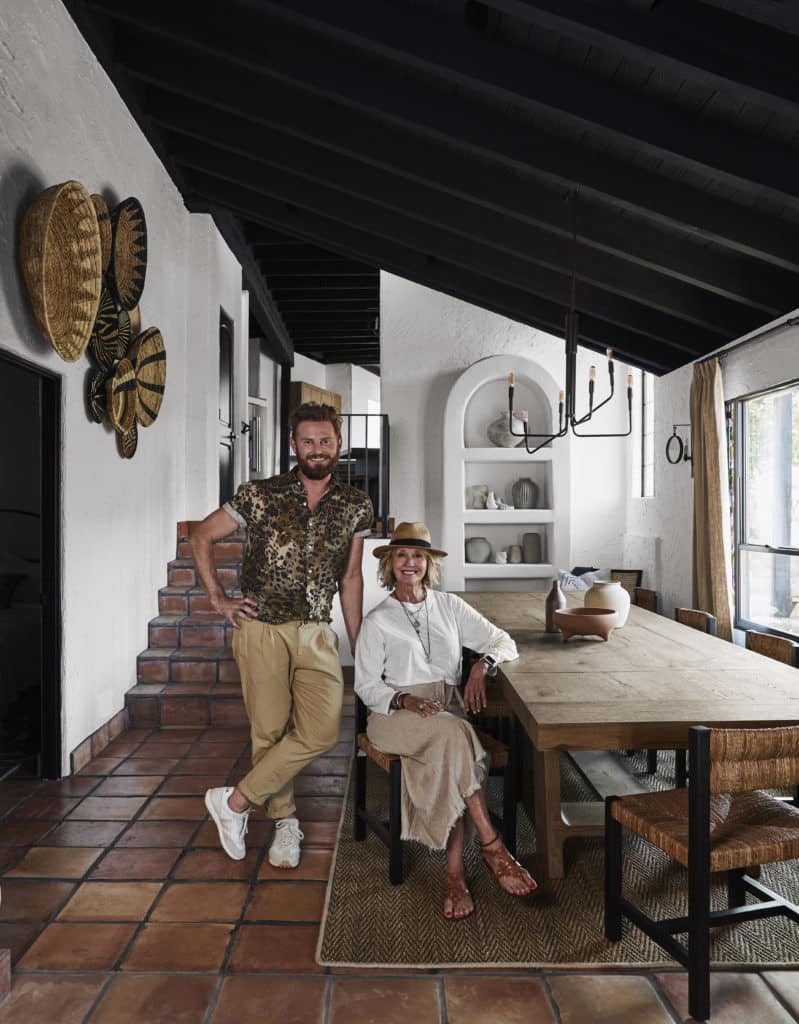
Even before Queer Eye television star Bobby Berk came knocking, Paula Oblen had made a name for herself as an expert at turning vacation rentals into sumptuous one-of-a-kind experiences in California’s Coachella Valley. In fact, her work in Palm Desert was in such high demand that she relocated there from Orange County last year to spare herself the constant commute. Not long after, Bobby fortuitously rented one of Paula’s properties, launching the kindred-spirit designers into a creative collaboration you can now find available for rent on Airbnb.
Enchanted by Paula’s impeccable taste, he recruited her to help reimagine a sprawling 1950s Spanish-style compound they named Casa Tierra. The home features original stucco walls, wood beams and terracotta floors, a Native Trails sink and vanity, and Paula’s spare-no-details brand of bohemian barefoot luxury.
She’s now developing a course on how to upgrade your Airbnb or VRBO listing. In the meantime, she’s shared plenty of tips with us, including how the gift basket she left for Bobby led to a phone call that changed her career forever.
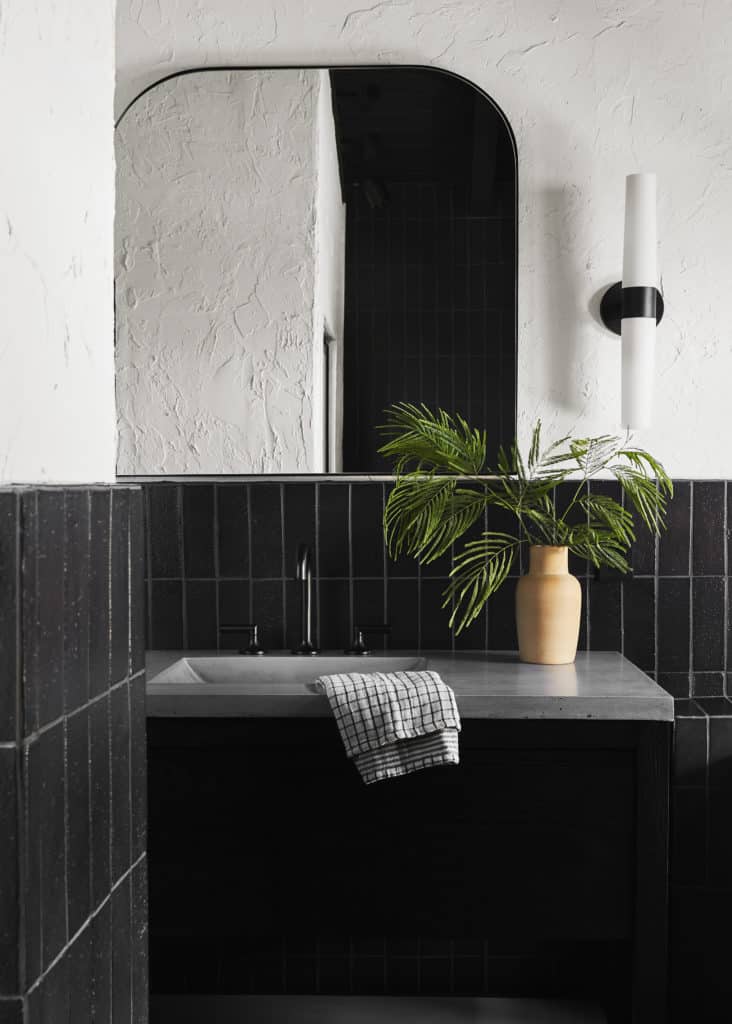
How did you get into this niche of hospitality design, specific to luxury properties?
PO: My philosophy with design has always been designing experiences versus creating spaces. And all savvy travelers these days crave experiences. They want to feel a sense of adventure. They create and schedule their vacations around the feeling they want to have. I’ve always found myself intuitively looking at how a space makes you feel. I think we all do that naturally when we walk into a space, whether it’s a restaurant or a retail store or a home. Boutique hotels especially were my source of inspiration for many years. I realized design was in my blood when I found myself infatuated with boutique hotel experiences and the way they evoked an emotion.
In 2010, I founded Hotelements. It’s all about the philosophy of creating experiential spaces that tell a story, immersive experiences very similar to a boutique hotel. It was literally founded at one o’clock in the morning when my husband and I were playing darts over a martini.
We ended up having a lot of notes on napkins from that hotel visit.
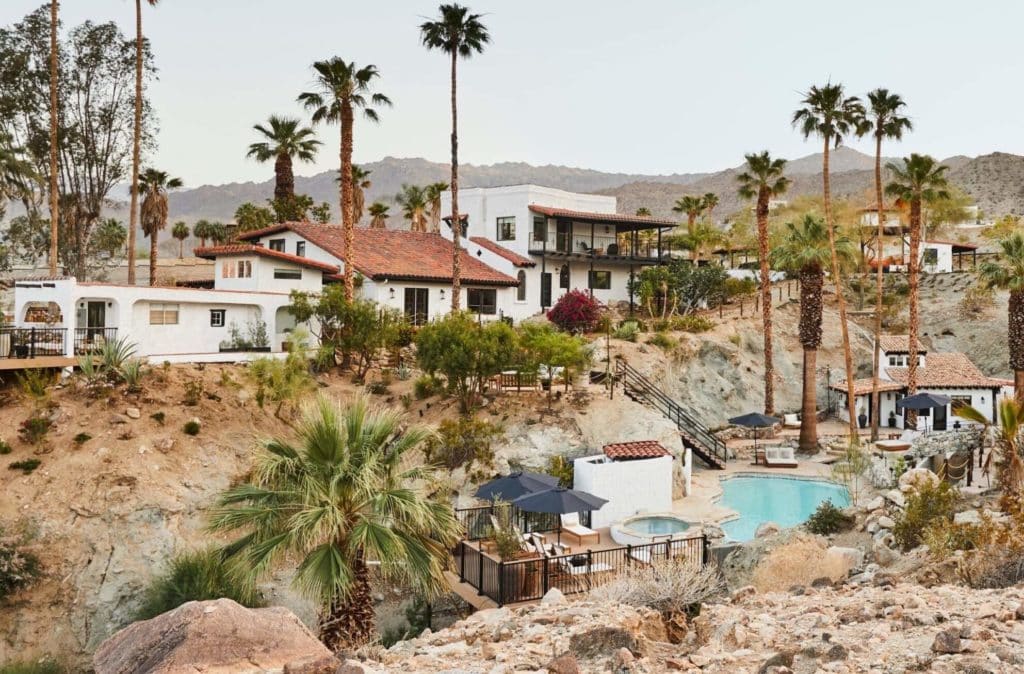
Tell us about the Casa Tierra project. How were you brought on board and what was your role?
PO: Interestingly enough, for about a year and a half prior to this project I was focusing solely on Palm Desert, working with a specific property management company. And as luck would have it, my new best friend Bobby Berk actually stayed at a property I did called Summit; that would have been the summer of 2021. It was Fourth of July.
I knew he was coming because the property management company said, “Hey, if you’re going to be in the desert this week, we’ve got a special guest coming, designer Bobby Berk.” I was out here at that time working, so I made him a really fun, personal little gift basket with my card and a handwritten note and some whimsical, cheeky things. I left it out for him, and he immediately followed up. He loved the house.
He said right away he had a connection with the design aesthetic. It felt like him. We had a connection without knowing. He said, “I want to meet her.” And then he said, “Well, I’ve had several cocktails. And now I’m in in the pool with all my friends. And we’re drinking, and now I want to have my own vacation rental.”
That’s what prompted him to purchase Casa Tierra.
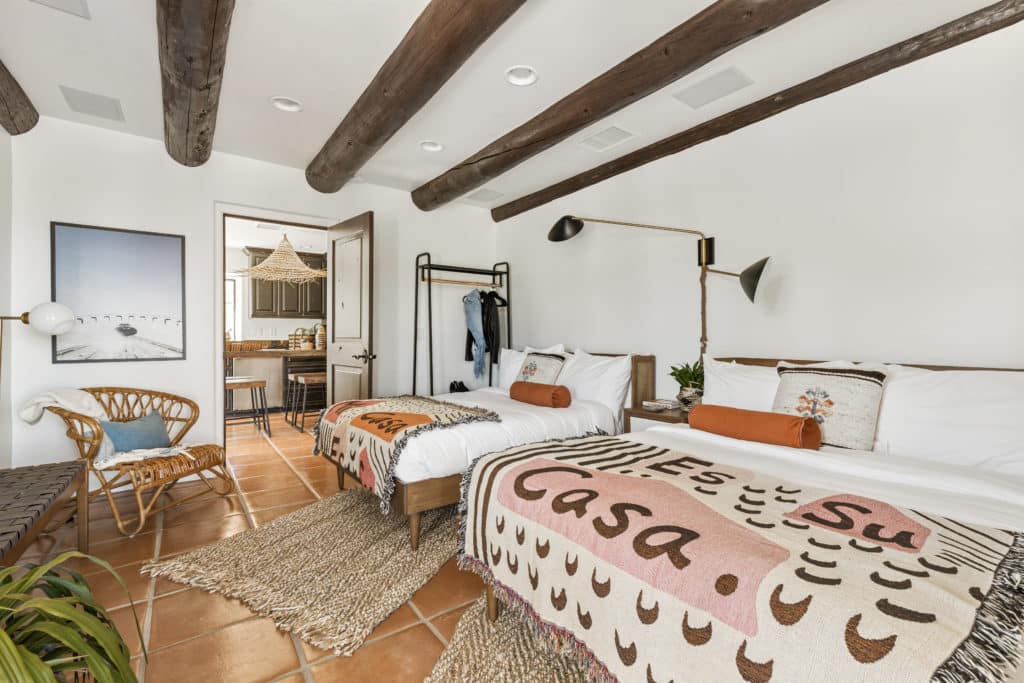
What was the condition of Casa Tierra when you started, and what did you do to it?
PO: To say that it needed TLC is an understatement. The house had been built and rebuilt and retrofitted over the course of 50-plus years. In hindsight, Bobby and I both think we should have probably torn the house down and started from scratch. It was the most difficult project I’ve ever worked on. Really, it was a beast.
I managed the whole project; we did it in six months, which is unbelievable. I pretty much lived and breathed it solely for six months. I immersed myself in it to such a level that I stayed there, I slept there. I do that with most properties because I want to feel what a guest is feeling. That makes me really see it through a different lens.
But you can imagine what needed to be done with electrical and just from safety perspective alone. We found black mold multiple times, so we had to then rip things out that we had almost finished. It was difficult on many, many levels, but so gratifying at the same time.
We really wanted to maintain the integrity of the house and make sure that the people who visit are really going, “Wow, look at these old textured stucco walls — they left those!” Some people will be like, “Wouldn’t you smooth those out?” Not only would that be extremely expensive to do, but it also gives a window into what the house was like back then.
We did move walls, and we got rid of the stairwell in that original living room, and we had all kinds of different structural things that had to happen along the way. But the terracotta floors had to stay. I was like, “Okay, three things right away: The floors have to stay. The walls have to stay textured; then we will paint them and make them relevant and white and fresh to give us that modern Mediterranean Spanish hacienda feel. And we have to make all the wood ceilings black.”
Everybody balked at that really, except Bobby and me.
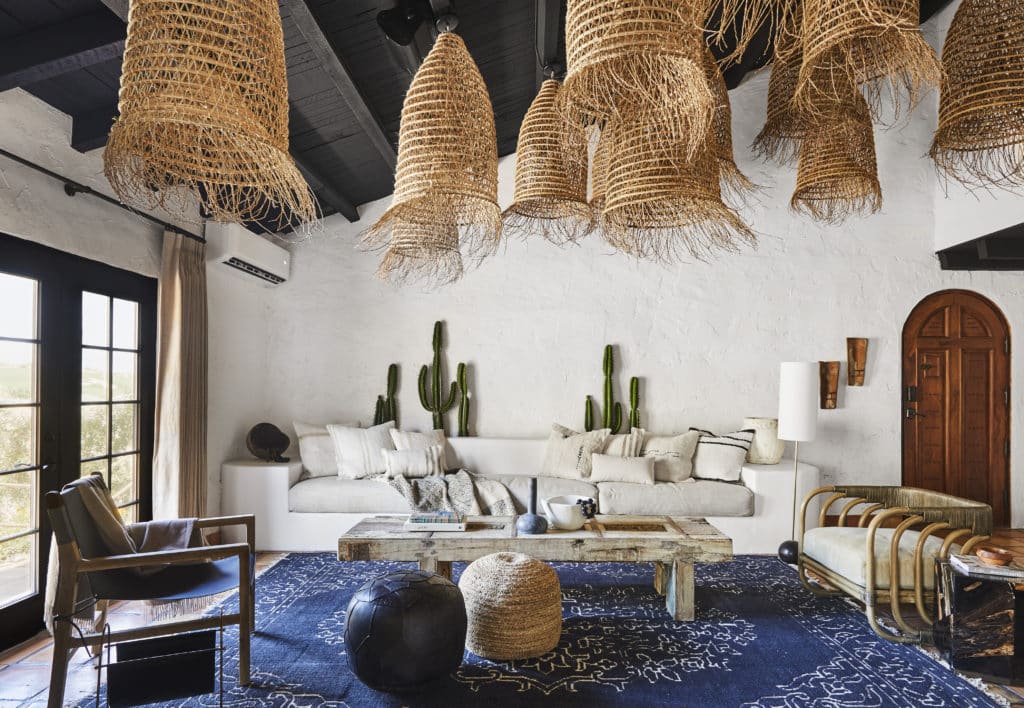
When designing a rental, how do you find your north star without a singular client?
PO: Luxury homes that are going to be transformed into luxury vacation rentals tell you what they want and need. I’m very much about allowing that to organically unfold through the design exploration phase.
The locale of a home, whether it’s in Palm Desert, Colorado, the mountains or the beach, will really tell you. For example, if I were designing something in Napa, then the story around that would be about wine. It would be about the history of that house and how long it’s been in that area. You don’t go to Napa if you want to be on the beach.
Using Casa Tierra as an example, the minute they walk in they are immersed into this desert-modern feeling that’s got so much history but at the same time very relevant design because we’re in 2022. It’s modern, it’s old, but the same time immersive. We wanted to make sure they knew they were in the desert.
The Tunisian lighting installation in the living room, for example, was made from date palms, and date palm are indigenous to the desert. I always look for those kind of connections. What connection to the property can I take and translate into something really cool and fun and playful and adventurous in the house?
And have a story to tell; people want stories.
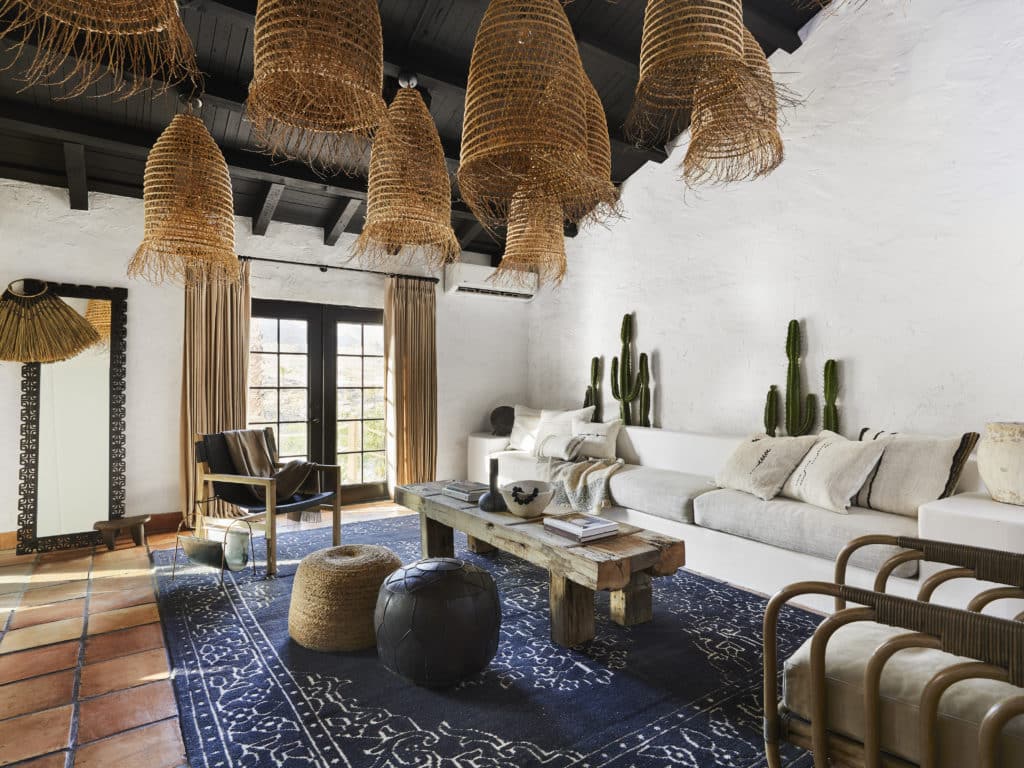
How would you describe your aesthetic in five words?
PO: Modern, hip, organic, barefoot luxury.
Oh, the inclusion of the word “barefoot” is really cool.
PO: Yeah, it says it. It says that it’s casual yet still luxurious. I’d say even with a bohemian twist, in playfulness, because I love integrating humor and cheekiness into properties.
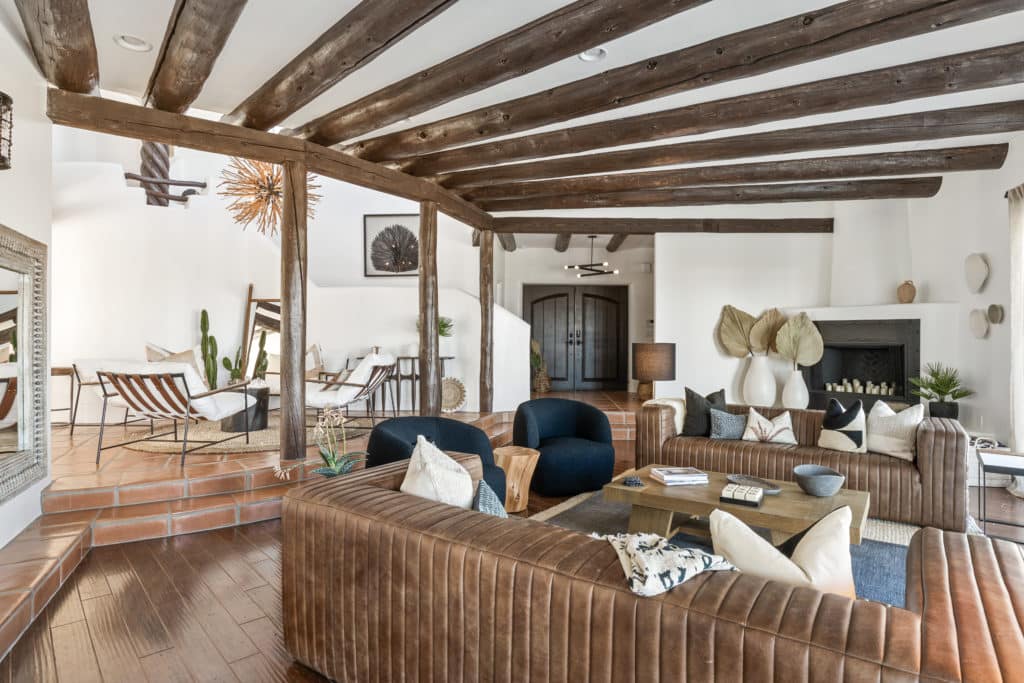
What’s your favorite room in a house to design and why?
PO: The main living space or common area that everybody enjoys.
The Casa Tierra living room was my favorite because it included this installation that had a story behind it. We literally fed an entire village in Tunisia from our purchase of these pendants that were handmade with date palm.
I love a story behind something. Not everybody is going to know the story, but at the same time they’re going to come in and literally going to feel it. I love doing that in a space that I know everyone’s going to really pay attention to.
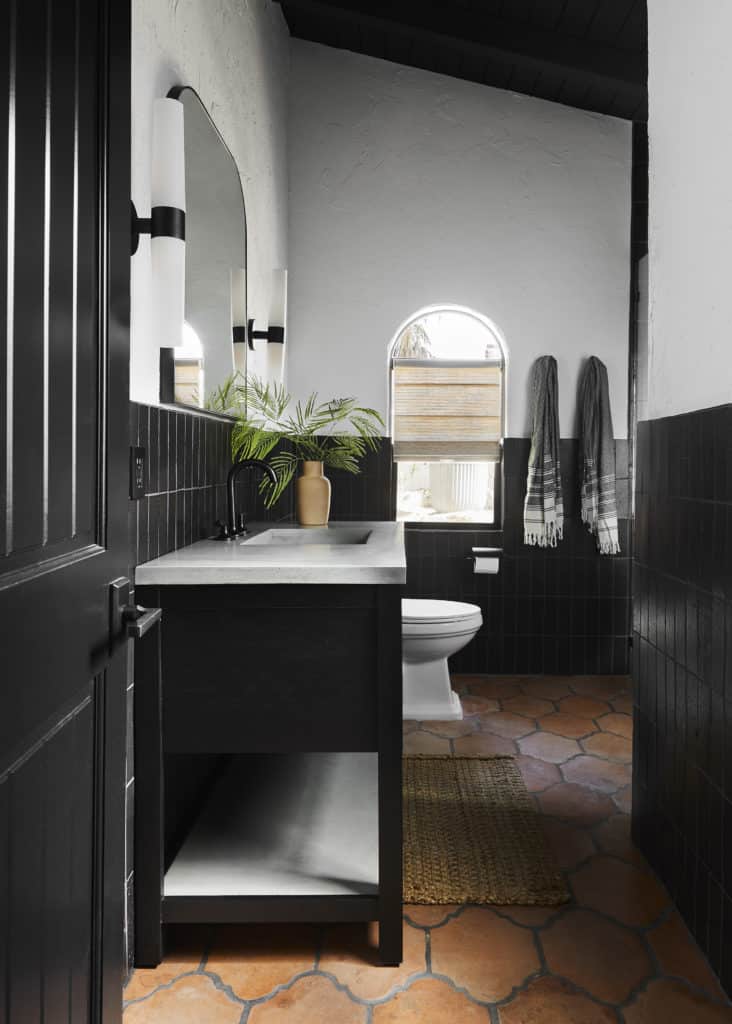
This dovetails really nicely with Native Trails because our products have really cool stories attached to them. They’re sustainably made by artisans around the world. It makes sense for a designer who’s also a storyteller to use our products.
PO: Absolutely. Oh my gosh, and I’m just in love with your products because I am constantly wanting this organic feel like what your Palomar sink and your Solace vanity did for that bathroom. I just put another of your sinks into a residential project.
What is something people don’t understand about being an interior designer?
PO: Oh, lordy mercy. From the point of view of an interior designer in the vacation market, people don’t understand that branding your property by giving it an identity such as Casa Tierra allows guests to feel immersed in the story.
I don’t know if I necessarily coined this phrase, but I use it a lot — I basically do “branded interior design.” That’s really how I refer to my business. It’s taking design and adding a human connection, creating that experiential stuff. That can even be inspiration for your own home. You really brand your own home around what you’re all about.
In a luxury vacation rental experience, people are paying top dollar per night for these properties, so they want to feel a branded experience. When you go into a boutique hotel, it’s a branded experience. Well, you should have the same priorities with your vacation rental. If you own that property, you need to be thinking of yourself as if you’re the GM of a small boutique hotel.
Branding your property and giving it an identity allows you to share these subtle touch points around the property, forge connection and engagement, and create Instagrammable design moments that spark engagement that encourages guests who are sometimes influencers to share in real time.
That’s an amazing advertisement of the property.
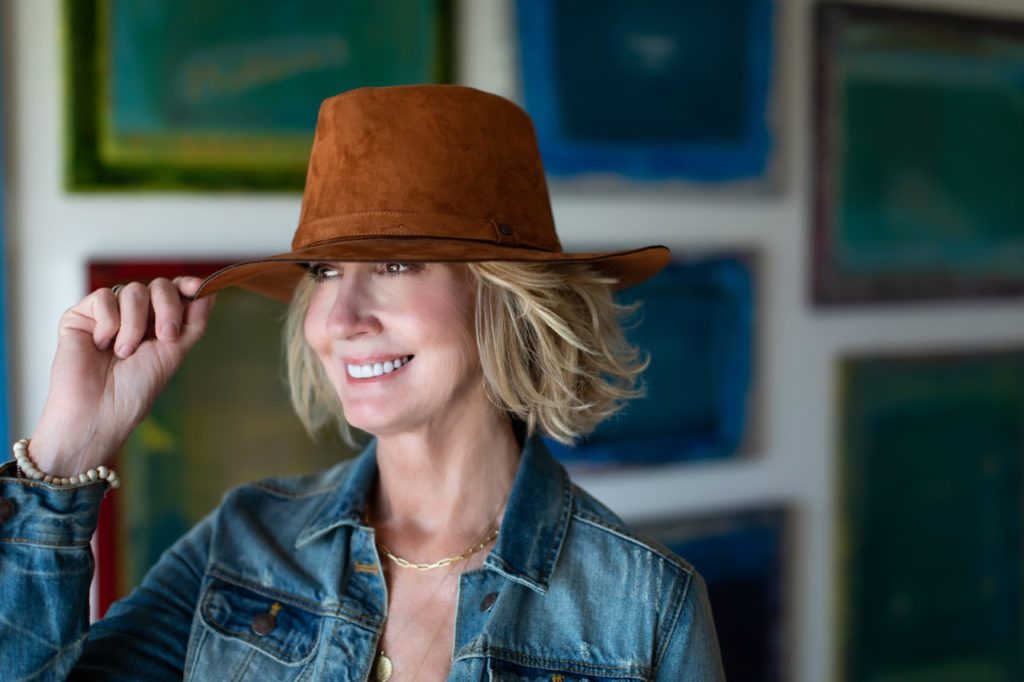
What does living well mean to you?
PO: Living well means you’re living in the moment, which is always difficult, as we all know. Living well means how do I blend what I do for work with what I do for play? Because play time and having fun in life is ultimately important. If I’m doing that, I’m much better at my work. My creativity is flowing.
What does every kitchen need?
PO: Every kitchen needs a big gathering space around a big island to break bread, gather with friends and family, tell stories. And as it relates to the vacation rental market, every house needs a signature cocktail. On that note, I will tell you something fun. I like to create a signature cocktail for every house I design. For Casa Mara, I created a little recipe that I left in the property for the guests to make if they want. We had two groves — a lime and a lemon tree — so I called it “cocktail grove,” made a sign and created some recipes.
What does every bathroom need?
PO: A place to put your cocktail around the tub, if it has a tub. Honestly, every bathroom in my mind needs a fun design and good lighting. People say, “Oh my god, the bathroom is so small. I don’t want it to look small.” Well, who cares? It is small. Just have fun. You have a moment in a bathroom do something so creative and different.
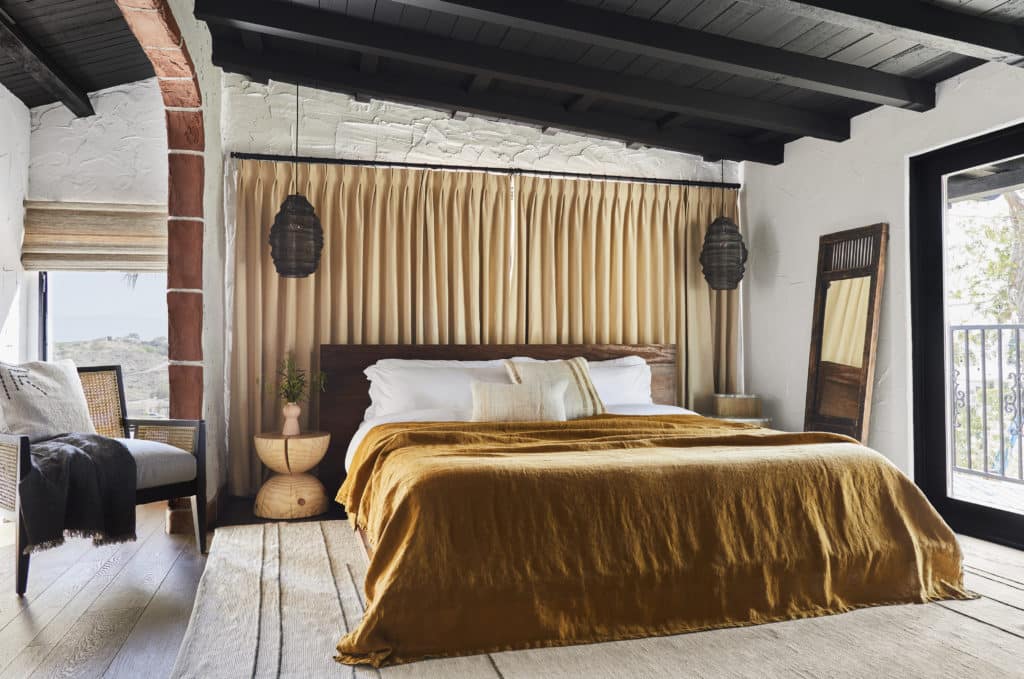
Who or what is inspiring you right now?
PO: Gosh, I’d say Bobby’s inspiring me because he and I have gotten to be so close. I love what he’s doing with Queer Eye and helping families and people in need and sharing his design knowledge and all of that.
Kelly Wearstler is always a big person that inspires me because she does things so outside the box. I love, love, love. She’s very bold in these big hotels, but I feel like I can translate a few things from her, you know?
There’s also a London-based designer, Kelly Hoppen, that I always like, too. I’m more inspired by spaces. I love going to the hotels and really getting inspired. I can always find some little nugget that I can translate into a project.
Photographer: Sara Ligorria Tramp for Tramp Studio
